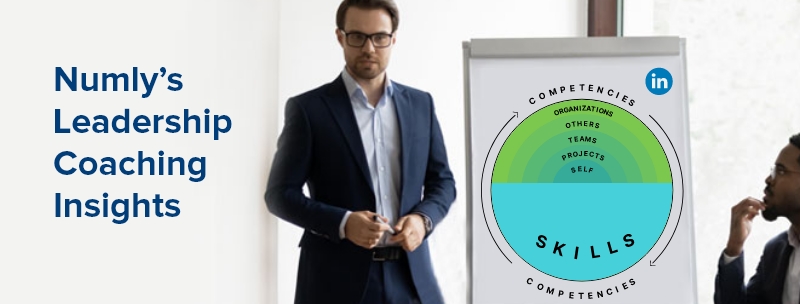“Women belong in all places where decisions are being made” – Ruth Bader Ginsberg aka, Notorious RBG.
Ruth Bader Ginsberg’s crusade for equal rights is known to everyone. Throughout her career, she focused on making those in positions of power become aware of the challenges that were unique to the women workforce. It was her strategy to help men in power see the differences in opportunity and treatment meted out to women, just because they were, well, women.
The Lilly Ledbetter Fair Pay Act of 2009 was an outcome of her fierce dissent amongst many other such path-breaking acts that paved the way for equality for women. It is now the responsibility of corporate organizations to take this movement a step further and provide women the support they need to become prolific leaders like Ginsberg.
If we look at the leadership gender gap, it shows us that while it still might be a man’s world, forward-thinking organizations now know that we need both men and women to succeed.
There are several reasons for this gender gap – reasons such as inexperience, family responsibilities, or . But given that we are now in the 21st century, companies need to find a way to deal with these obstacles.
Without delving into the controversy of the underrepresentation of women in leadership roles, let’s instead look at how to fix this gender imbalance.
There is enough evidence to show that women not only do well in leadership roles but thrive in them. A report from Associated Press and Equilar, among the 25 highest-paid CEOs, five of them were women.
Some of the largest and most successful enterprises have had women steering the ship – from IBM’s Virginia Rometty to PepsiCo’s Indra Nooyi to Facebook’s Sheryl Sandberg to Mary Barra of General Motors, you just have to cast a cursory glance at the Forbes world’s most powerful women list to see that the ‘so-called’ reasons to keep deserving female candidates away from the C-suite are quite honestly, baseless.
Now that cracks in the glass ceiling are getting deeper, it is about time for organizations to realize that fixing the gender imbalance is not only the right thing to do, it is also important for organizational success.
The business case for promoting gender diversity
Yes, there is a business case for leaning in towards gender diversity.
Research from McKinsey discovered that promoting gender diversity leads to better business results and that gender-diverse companies perform better financially.
Organizations with women in 30% of leadership roles are 12 times more likely to be top-performing companies.
Joanna Barsh, co-chair of the International Council on Women’s Business Leadership’s Leadership Working Group and author of ‘How Remarkable Women Lead’ further shows that it is now becoming important for an organization’s leadership to match its customer base. Given that women make up a substantial chunk of the customer base in almost every industry, having more women representation is just good old common sense.
Barsha goes on to state that gender diverse teams also come up with better solutions especially for “non-linear, complex problems”. Solving these problems need diversity of thought, backgrounds, skillset, and experience.
Business case aside, women leaders can be a huge benefit since they bring a growth mindset, are hugely participative in getting more thoughts and ideas, and in bringing positive emotions to the workplace.
The silver bullet to fix the gender imbalance
It is apparent that gender diversity efforts are not a zero-sum game but end up benefiting all employees. It is about time that we move away from ‘second-generation gender bias’.
While there are many solutions to fix the gender diversity gap, focusing on learning and development initiatives is an important step in the right direction.
Women leadership development programs have to now become bolder and more tailored to help women navigate the corporate landscape and equip them with the tools, knowledge, and skills they need to create an impact and have greater influence across the organization.
What should these innovative programs include?
Firstly, women leadership development programs have to be a continuous process. These programs have to be designed to drive a shift in behaviors.
Hence, coaching becomes a critical tool for enablement.
- Leadership programs have to now move away from its myopic worldview and understand that just like women bring specific skill sets to the table, they also have certain specific challenges to navigate. The objective of coaching, hence, cannot be to make women leaders more like their male counterparts. Instead, it has to focus on how women can leverage their unique skills such as empathy to develop their own leadership style and implement a personal leadership strategy.
- Organizations also have to open up networking opportunities for women leaders as this helps them advance their careers. Coaching can help women build this network and develop connections to create opportunities for broader exposure and authentic engagement by eliminating self-imposed restrictions.
- Organizations have to assume the responsibility of identifying their high-potential women employees and then employ data-backed guidance to help them overcome leadership challenges. Leveraging tests such as Behavioral Assessment tests or 16 Personality Factor self-evaluation to identify strengths and weaknesses can help in closing the skills gap and assist in building authentic leadership.
- Coaching programs also need the technology push to connect high performing women employees with the right mentors who will help them navigate women-specific challenges. For example, some women might need greater help in managing organizational complexities than their male counterparts owing to the years of social conditioning. This very conditioning might prohibit them from asking questions for the fear of being perceived as weak. A good coach will help such women employees with the right tools to manage perceptions while establishing credibility and their individual leadership styles without sacrificing their inherent femininity.
- Women leadership development programs have to also become hyper-focused on monitoring and measuring coaching progress and ensure that they have the right tools to provide timely nudges. An AI-enabled coaching platform can come to the rescue and help to deliver personalized, contextual, and relevant nudges to address skill gaps and unique learning abilities.
- Leadership programs for women also need to become analytics-driven and should employ actionable insights from rich analytics on skills development, performance, engagement, and more. These engagement insights can be used to further fine-tune women leadership programs and make them contextual, relevant, and consequently more impactful for the women workforce. This also helps in building women leaders who are better prepared for their current and future responsibilities.
- Social conditioning helped men remain unaware of the plight of women in the workforce. It was people like Ruth Bader Ginsberg who helped them see that inequality and discrimination existed. In the same way, social conditioning can also influence many women leaders. It is important to get the guidance and coaching to see which of these influencers are self-serving and which need to go to thrive in the corporate world. Coaching is the most effective way to help women make more intentional choices about their leadership careers. This includes taking the agency to control their careers, building authenticity to discover their leadership styles, strengthening professional connections to grow professional relationships, and increasing self-awareness and clarity.
Most importantly these programs have to help women leaders develop a sense of wholeness that many women struggle with – the battle to seek roles beyond work or to unite different life roles into a single integrated whole.
Coaching can help women realize and internalize that it is justified to value multiple roles and accept a broader definition of success – one that helps them let go of the idea that work and success come from equitable distribution of time between work and their other roles. Instead, wholeness helps women set priorities and value all their commitments while letting go of roles, obligations, thoughts, and mindsets that no longer serve them.
While it might be a man’s world as sung by James Brown in 1966, today we concur more and sing along loudly with Beyonce when she says, “Who run the world? Girls”.
Contact us to see how an AI-enabled coaching platform can help your organization fix gender imbalance and give your women leadership program the makeover it needs.
Come and be a part of Numly’s Women’s Leadership Program – Get a chance to examine your strengths and gaps, get matched with fellow Women Leaders, and use the networking opportunity as a springboard for personal development. Know more at https://www.numly.io/championing-women-leaders-program/

